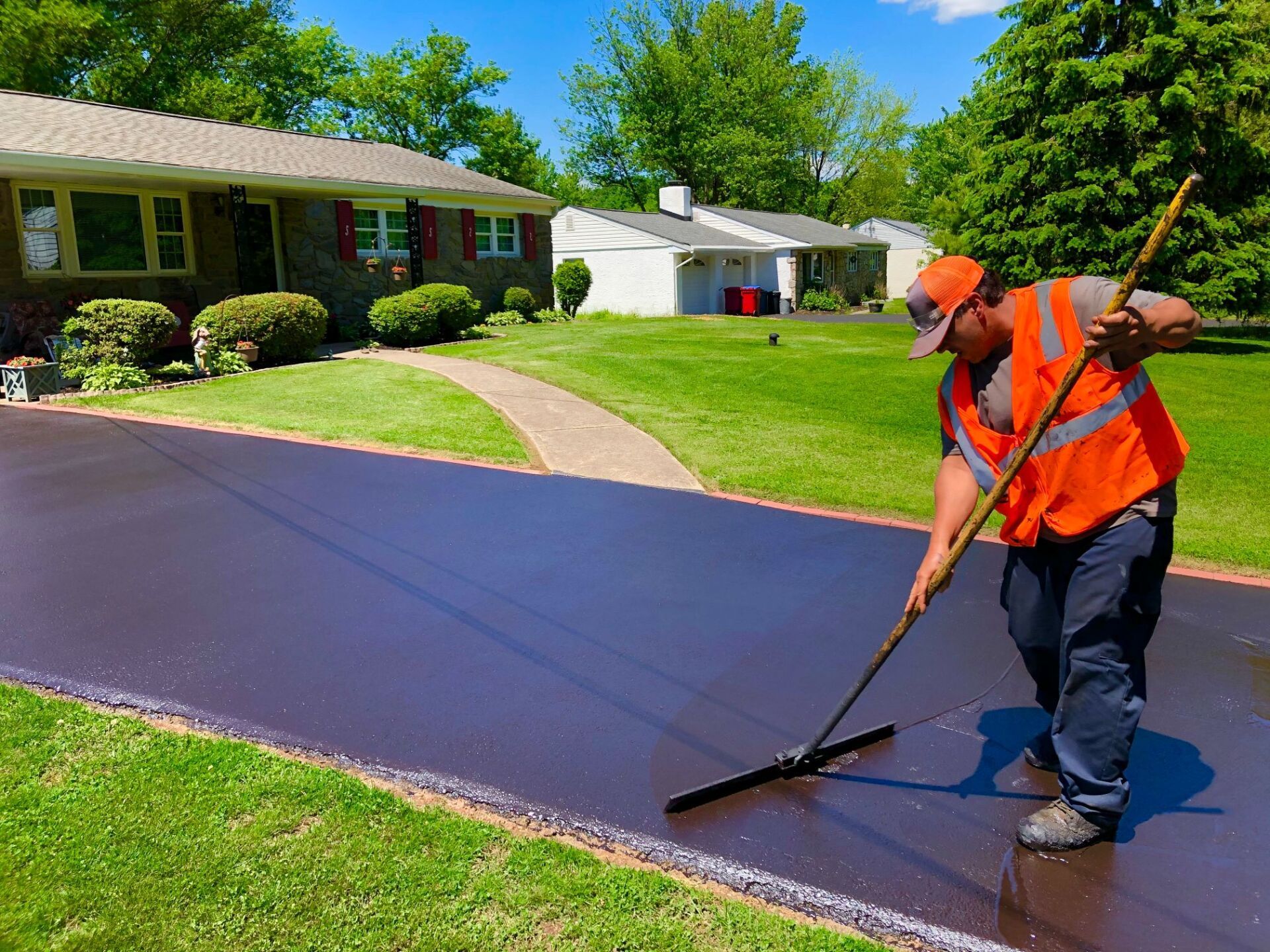Hot Mix Asphalt: A Lasting Remedy for Sidewalk
Warm Mix Asphalt (HMA) has actually emerged as a leading sustainable selection for pavement solutions, using a myriad of ecological advantages and ingenious technologies. As the need for environment-friendly construction methods grows, discovering the nuances of HMA's sustainability can give important understandings into the future of pavement options.
Environmental Benefits of Warm Mix Asphalt

Moreover, Warm Mix Asphalt helps to alleviate urban warmth island effects. Its dark color soaks up sunlight, lowering the amount of warm reflected back into the ambience compared to lighter-colored sidewalks. This can lower ambient temperatures in city areas, decreasing the need for cooling and eventually lowering power usage.
In enhancement, Warm Mix Asphalt adds to improved stormwater management. Its porous nature enables water to reenergize and penetrate the sidewalk groundwater products, lowering runoff and the risk of flooding. These ecological benefits make Hot Mix Asphalt a sustainable choice for paving freeways and roads.
Energy Efficiency in HMA Manufacturing
Is power effectiveness a crucial factor in the manufacturing of Hot Mix Asphalt (HMA)? Energy plays a substantial role in the manufacturing of HMA, affecting both cost and ecological sustainability. One key facet of energy efficiency in HMA manufacturing is the use of cozy mix asphalt (WMA) innovations.
Additionally, developments in plant modern technologies have led to more energy-efficient HMA manufacturing processes. By maximizing power usage in HMA production, the market can minimize its carbon footprint while maintaining high-grade pavement materials.
Recyclability of Warm Mix Asphalt
The recyclability of Hot Mix Asphalt (HMA) is a crucial aspect of its sustainability and long-term environmental impact. HMA is just one of one of the most recycled materials in the United States, with over 100 million heaps of redeemed asphalt sidewalk (RAP) being reused yearly in brand-new sidewalk building and construction. Reusing HMA offers a number of ecological advantages, such as lowering the need for virgin materials, decreasing energy consumption during production, and decreasing the amount of waste sent to landfills.
The process of recycling HMA involves milling the existing pavement, crushing it into smaller pieces, and blending it with brand-new accumulation and asphalt binder to develop a recycled mix. This recycled mix can often carry out as well as or perhaps better than traditional HMA, while requiring fewer raw materials and creating lower greenhouse gas emissions. By including RAP into brand-new sidewalk jobs, road agencies can save natural resources, reduce prices, and decrease the ecological impact of road building and maintenance tasks. On the whole, the recyclability of HMA plays a substantial duty in advertising sustainable practices within the sidewalk market.

Long-Term Efficiency of HMA
Asphalt sidewalks show durability and resilience over an extended duration, mirroring the long-term performance of Hot Mix Asphalt (HMA) The longevity of HMA can be attributed to its capacity to withstand hefty website traffic lots, rough climate problems, and the results of aging. Studies have actually revealed that properly designed and appropriately built HMA pavements can last for 20 years or more with normal upkeep. The trick to maximizing the long-term performance of HMA depends on utilizing top notch materials, complying with finest practices in building and construction, and applying efficient maintenance approaches. Appropriate drain, regular evaluations, and timely fixings are crucial for maintaining the architectural integrity of HMA sidewalks in time. Additionally, advancements in HMA technology, such as making use of polymer-modified binders and cozy mix asphalt, have actually better improved the useful link longevity and long life of HMA pavements. By focusing on high quality construction and upkeep practices, HMA remains to verify itself as a sustainable and economical solution for durable sidewalk framework.

HMA: Longevity and Sustainability
Demonstrating both durability and sustainability, Warm Mix Asphalt (HMA) has ended up being a cornerstone in the construction of resilient sidewalk facilities - hot mix asphalt. HMA's toughness stems from its capability to withstand hefty lots, severe weather, and high web traffic quantities, making it a trustworthy choice for streets, freeways, and airport runways. The make-up of HMA, which typically consists of aggregates, binder, and filler, plays a vital duty in enhancing its durability and resistance to tear and wear
Additionally, HMA's sustainability hinges on its recyclability and energy-efficient manufacturing procedure. The ability to reuse recovered asphalt sidewalk (RAP) in new HMA mixes minimizes the need for virgin products and minimizes the environmental effect of sidewalk building and construction and maintenance. Additionally, the energy effectiveness of generating HMA lies in its reduced blending temperatures contrasted to various other sidewalk products, leading to decreased energy usage and greenhouse gas exhausts.
Conclusion
In verdict, hot mix asphalt (HMA) offers a lasting option for pavement with its eco pleasant attributes. HMA's recyclability, energy performance in production, and long-term longevity make it an eco-friendly option for road building and construction.
HMA is one of the most recycled materials in the United States, with over 100 million tons of redeemed asphalt pavement (RAP) being recycled yearly in new sidewalk construction.The procedure of reusing HMA includes crushing the existing you can try here pavement, crushing it into smaller sized pieces, and blending it with brand-new aggregate and asphalt binder to develop a recycled mix.Asphalt pavements show sturdiness and resilience over a prolonged duration, reflecting the lasting performance of Hot Mix Asphalt (HMA) In addition, developments in HMA modern technology, such as the use of polymer-modified binders and warm mix asphalt, have further improved the durability and durability of HMA sidewalks. The ability to reuse recovered asphalt pavement (RAP) in new HMA combinations reduces the demand for virgin products like it and minimizes the environmental effect of pavement construction and maintenance.